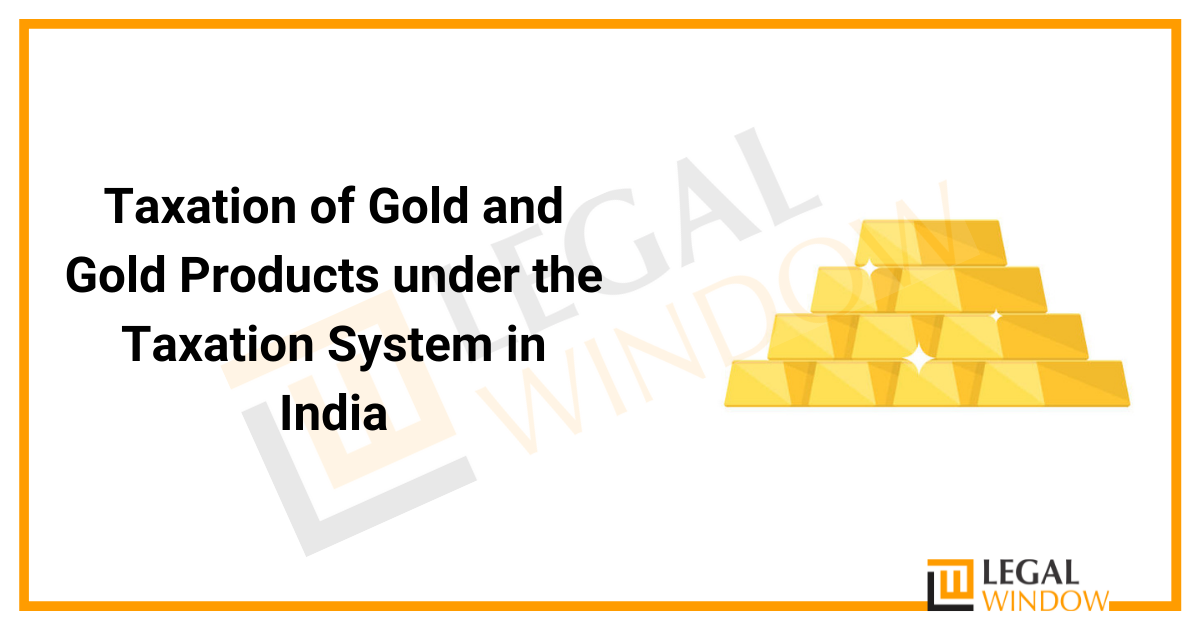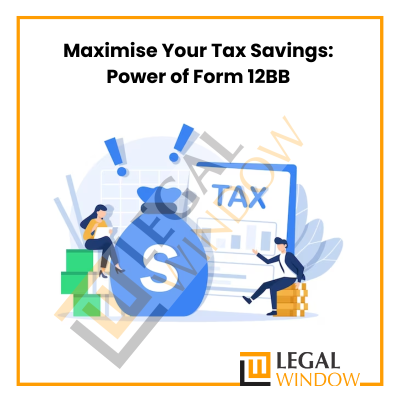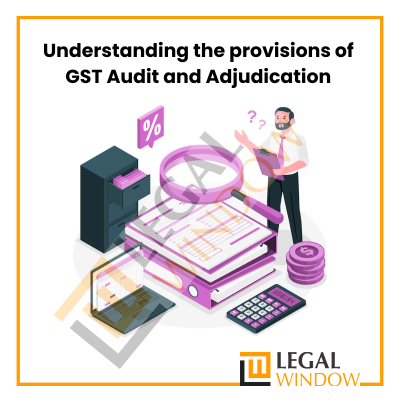Taxation of Gold and Gold Products under the Taxation System in India
- May 3, 2022
- Income Tax

In India, gold is one of the most popular and respected assets. It has shown to be the strongest investment option for generating high returns over time, particularly during economic downturns. There are several gold-related investment options available today. On significant occasions and for celebrations, children’s weddings, and a variety of other reasons, people choose to invest in actual gold. Digital gold, on the other hand, makes it a highly easy and safe investment. Read on to learn about the maximum amount of gold you may own, what happens if you exceed the limit, how the sale/transfer of gold is taxed, and more about Taxation of Gold and Gold Products.
| Table of Content |
Key Abstract
When the government implemented demonetisation on November 8, 2016, people rushed not just to exchange bank notes, but also to buy gold using money that was not subject to taxation. Due to the widespread misconception and the fact that the Income Tax Act, 1961 (‘the Act’) has no specified limit for gold possession, such purchases would result in tax evasion. To bring such high-value transactions within the Act’s scope, the Central Board of Direct Taxes (CBDT) issued a press release on December 1, 2016, clarifying the applicability of the Income Tax Law and the tax positions on quantity limitations and criteria for gold jewellery possession.
The article addresses the fundamentals of gold taxation. Taxation on the acquisition of gold, taxation on the selling of gold inherited via inheritance or gift, Gold Exchange Traded Fund Taxation (ETF), Taxation of gold monetisation schemes, taxation of sovereign gold bonds (SGBs), and taxation of digital gold.
Taxation of Gold and Gold Products
The most important asset in the investing category is gold, which is now a large favourite of investors who are afraid of practically all other assets, particularly paper money. Taxation has also added lustre to this metal, either by offering incentives or by cruelly taxing it. The Finance Act, 2016 proposes taxing gold by levying a 1% excise duty on gold jewellery without input tax credit, or a 12.5% excise duty with input tax credit. In addition, countervailing duty on gold dore bars increased from 8% to 8.75%. The excise charge on refined gold bars has risen from 9% to 9.5 %.
Legal Window will surely address your concerns regarding the taxations. Feel free to connect with our Experts.
Taxation of Gold and Gold Products under Direct Taxes
The following are the gold taxation under direct taxes:
- TCS (Tax Collected at Source): According to Section 206C, any person who receives any amount in cash as consideration for the sale of bullion or jewellery may, at the time of receipt of such amount in cash, collect from the buyer a sum equivalent to 1% of the sale consideration as income-tax, if such payment
- More than two lakh rupees for bullion,
- More than five lakh rupees for jewellery.
- ASSETS IN CAPITAL: It is specified in Section 2 of the Income Tax Act, 1961 to include gold ornaments as well, which implies that a long-term or short-term capital gain emerges on the sale or purchase of ornaments, resulting in gold taxes.
- 2015, Sovereign Gold Bond Scheme:The Government of India has launched the Sovereign Gold Bond Scheme in order to minimise the demand for real gold and hence the outflow of foreign cash due to the import of this precious metal. The Bond is a kind of physical gold substitute that also gives protection to the individual investor who invests in this metal to pay their social obligations. As a result, in order to provide parity in tax treatment between physical gold and Sovereign Bonds, Finance Act, 2016 amended Section 47 of the Income Tax Act, 1961 to provide that any redemption of Sovereign Gold Bond under the Scheme by an individual shall not be treated as a transfer and shall thus be exempt from capital gains tax.It also proposes amending Section 48 of the Income Tax Act, 1961 to offer indexation advantages to long-term capital gains originating from the transfer of Sovereign Bonds, as well as exemption from gold taxes for all assesses.
- 2015 Gold Monetization Plan: The Government of India implemented this plan in 2015. To provide the scheme with the same tax benefits as the Gold Deposit Scheme, 1999, the Finance Act, 2016 amended Clause (14) of Section 2 to exclude Deposit Certificates issued under the Central Government’s Gold Monetization Scheme, 2015, from the definition of capital asset and thus exempts it from capital gains. It also recommended changing clause (15) of section 10 to give relief from gold taxes by saying that interest on Deposit Certificates issued under the Scheme would be tax-free.
- In the case of Gold, Seizure Norms: Following demonetization, the government specified that gold jewellery and decorations worth 500 gm per married lady, 250 gm per unmarried lady, and 100 gm each male member of a family need not be confiscated in the event of a search. We may conclude that many strategies have been launched to avoid retaining this metal in physical form, and tax benefits have also been provided, nevertheless, through indirect taxes, we have seen gold taxation, which, while detrimental in the short term, will be beneficial in the long run.
Gold Investment Sources
When purchasing gold, you must take and save your tax invoices for the transaction, whether it is jewellery or bullion. According to tax experts, you do not need to be afraid if you can explain the source of your gold investment. The Central Board of Direct Taxes (CBDT) in a press statement on December 1, 2016, that there is no restriction on retaining gold jewellery as long as the source of investment or inheritance is indicated. However, the assessee’s income must be proportionate to the amount of gold possessed. Providing the requisite documents for such possession will aid in avoiding income tax department scrutiny. Otherwise, the assessing officer has the ability to seize the gold.
Establishment of Valid Proof
Proof of investment will assist you in determining the source of the investment when compared to your income tax return. Aside from the tax invoices that you will preserve, you may be wondering, what type of documentation is necessary in the event of inheritance and gifts. It would be ideal if you could offer a receipt in the name of the original, owner of the item in the case of inheritance or gift. You can also file a family settlement instrument, will, or gift deed declaring that the commodity has transferred to you. If no such document is available, the officer will examine your family’s social position, customs, and traditions to determine if your statement is genuine or not.
File your Income Tax, TDS and GST Return with Legal Window.
Endnote
Individual taxpayers are subject to the amounts given above. When it comes to a single locker containing gems from numerous families, the maximum will be the sum of each individual taxpayer’s contributions. It is advisable in this scenario to create joint locker accounts in the names of the taxpayers from each family. This manner, you can prevent misunderstandings and discrepancies in the near future from the Income Tax Department.
CA Pulkit Goyal, is a fellow member of the Institute of Chartered Accountants of India (ICAI) having 10 years of experience in the profession of Chartered Accountancy and thorough understanding of the corporate as well as non-corporate entities taxation system. His core area of practice is foreign company taxation which has given him an edge in analytical thinking & executing assignments with a unique perspective. He has worked as a consultant with professionally managed corporates. He has experience of writing in different areas and keep at pace with the latest changes and analyze the different implications of various provisions of the act.
Categories
- Agreement Drafting (23)
- Annual Compliance (11)
- Change in Business (36)
- Company Law (148)
- Compliance (89)
- Digital Banking (3)
- Drug License (3)
- FEMA (17)
- Finance Company (42)
- Foreign Taxation (6)
- FSSAI License/Registration (14)
- GST (118)
- Hallmark Registration (1)
- Income Tax (199)
- Latest News (34)
- Miscellaneous (164)
- NBFC Registration (8)
- NGO (14)
- SEBI Registration (6)
- Section 8 Company (7)
- Start and manage a business (20)
- Startup/ Registration (127)
- Trademark Registration/IPR (40)
Recent Posts
- Farmer Producer Companies-Major provisions under Companies Act April 26, 2024
- Detailed Analysis of Section 179 of the Companies Act, 2013 April 24, 2024
- Maximise Your Tax Savings: Power of Form 12BB April 23, 2024
About us
LegalWindow.in is a professional technology driven platform of multidisciplined experts like CA/CS/Lawyers spanning with an aim to provide concrete solution to individuals, start-ups and other business organisation by maximising their growth at an affordable cost.








